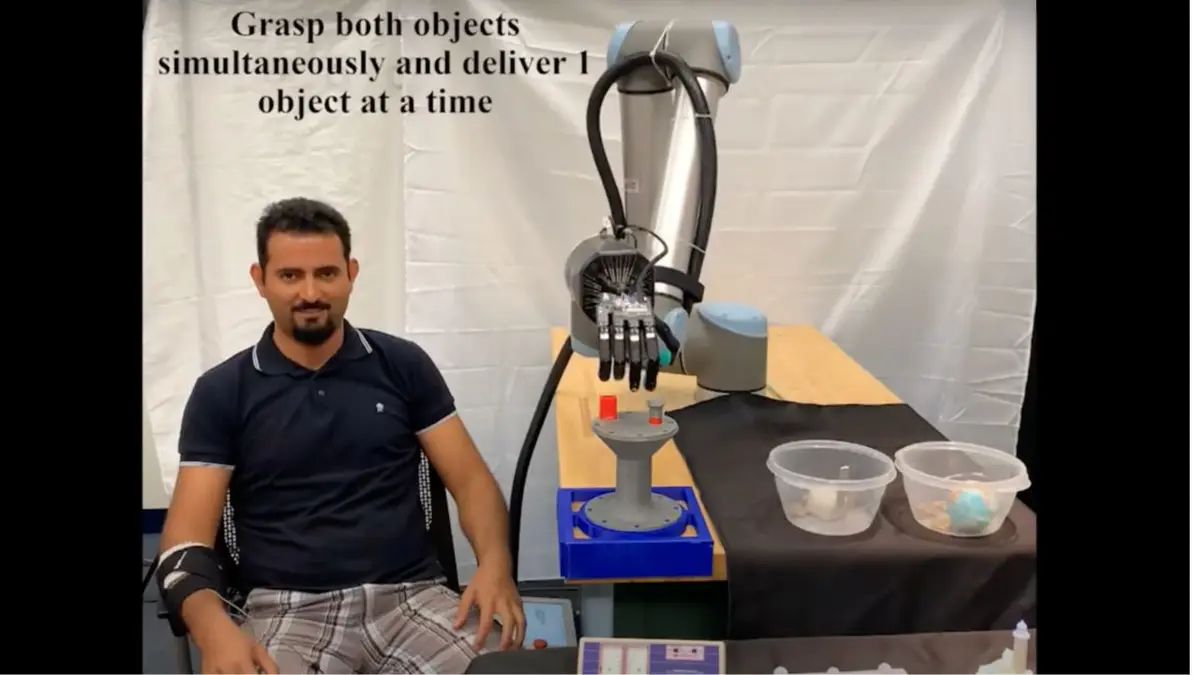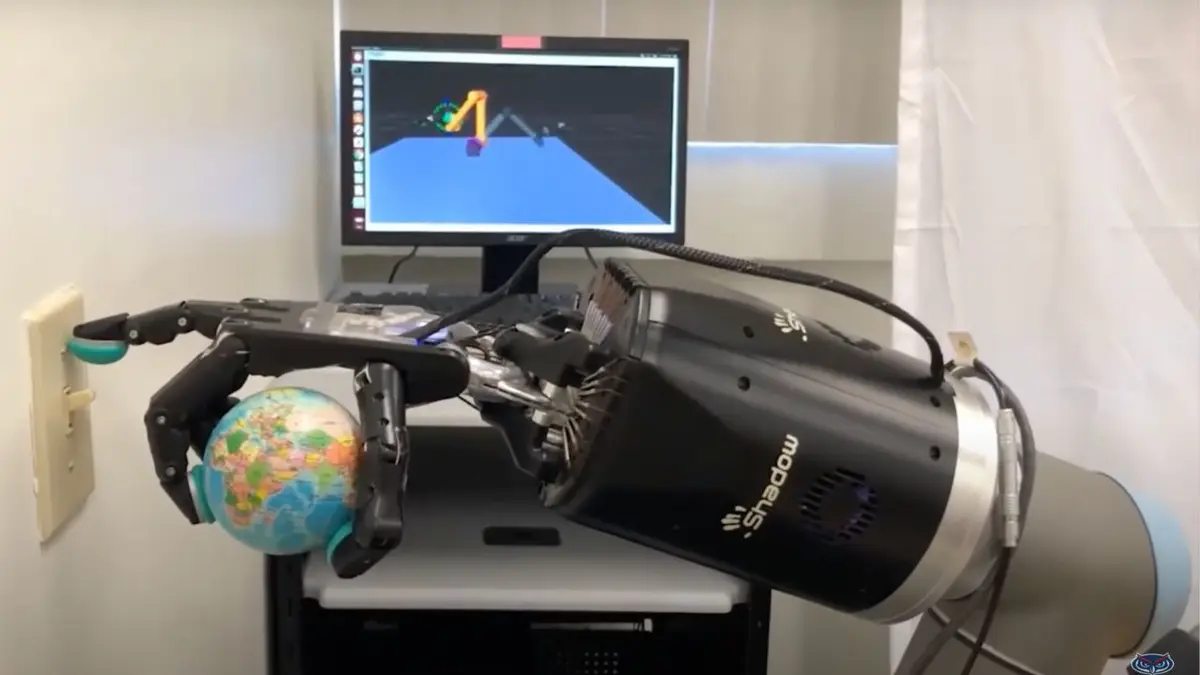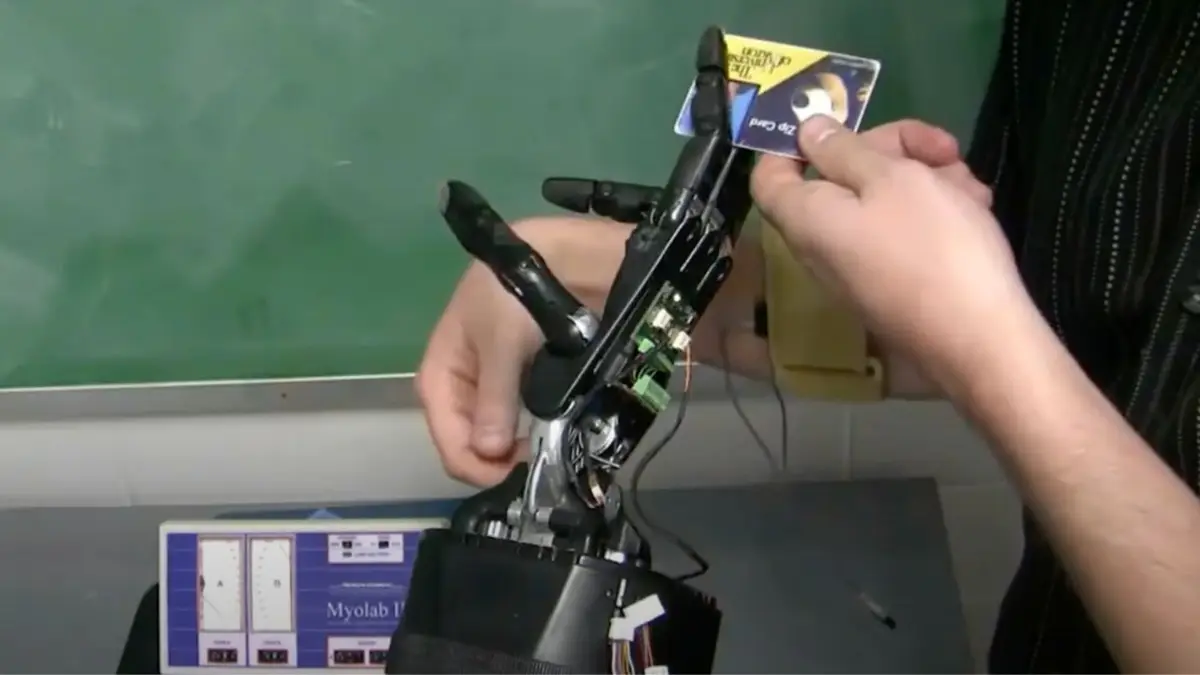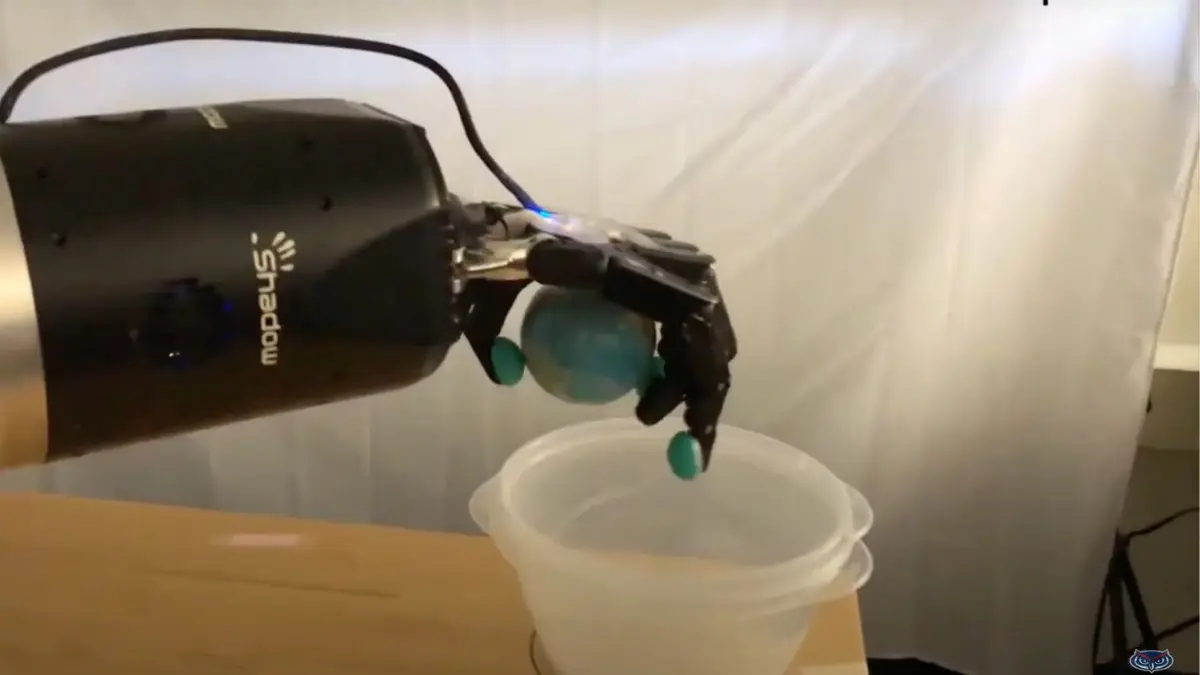Prosthetic hands have long struggled to replicate the dexterity and functionality of natural hands, often limiting users to a single grasp function at a time.
This limitation has made everyday tasks, such as typing on a keyboard or braiding hair, challenging for those who rely on prosthetics.
However, a groundbreaking study from Florida Atlantic University (FAU) offers promising advancements that could transform the experience of prosthetic hand users.
I’M GIVING AWAY THE LATEST & GREATEST AIRPODS PRO 2

New technology enables users to grasp two objects at once
Researchers at FAU's College of Engineering and Computer Science, in collaboration with the Charles E. Schmidt College of Science, conducted an innovative study that combined haptic feedback, electromyogram control and a wearable soft robotic armband. This study aimed to investigate whether users could control grip forces applied to two different objects simultaneously with a dexterous artificial hand.
WHAT IS ARTIFICIAL INTELLIGENCE (AI)?
The study's findings, published in Scientific Reports, demonstrated that multiple channels of haptic feedback allowed participants to successfully grasp and transport two objects at once without dropping them, even when visual feedback was obstructed.
For example, participants managed to pinch a card between their fingers while simultaneously unscrewing a water bottle lid or toggling a light switch with their little finger.

NEW PROSTHETICS RESTORE NATURAL MOVEMENT VIA NERVE CONNECTION
Multichannel soft robotic armband
A key innovation in this research was the development of a multichannel soft robotic armband designed to convey artificial sensations of touch. This armband included soft actuators that provided proportional contact force feedback and vibrotactile stimulators that alerted users if they were about to drop or break an object. The armband's design allowed it to deliver haptic feedback at three critical points corresponding to the thumb, index and little fingers, effectively enhancing the user's ability to control multiple objects simultaneously.
GET FOX BUSINESS ON THE GO BY CLICKING HERE
Participants in the study reported that haptic feedback was significantly more important than visual feedback, especially since visual cues often failed to indicate when an object was about to be lost. This insight underscores the necessity of integrating tactile sensations into prosthetic technology.

BREAKTHROUGH PROSTHETIC FINGERS REVOLUTIONIZE THE LIVES OF AMPUTEES
Implications for future prosthetic design
The implications of this study extend beyond immediate user benefits; they suggest a paradigm shift in how prosthetic hands could be controlled in the future. By enabling refined dexterous control through enhanced sensory feedback, this research opens new pathways for individuals with upper limb loss to engage in complex tasks traditionally deemed impossible with current prosthetics. This includes activities such as playing musical instruments or performing intricate surgical procedures.
In addition, the researchers noted that participants with limb loss performed as well as able-bodied subjects in key performance metrics during the tasks. This finding is particularly encouraging for clinical applications and indicates that advancements in technology can bridge gaps in functionality for users.
SUBSCRIBE TO KURT’S YOUTUBE CHANNEL FOR QUICK VIDEO TIPS ON HOW TO WORK ALL OF YOUR TECH DEVICES

COULD THESE EXOSKELETON 'POWERED PANTS' MAKE OUTDOOR ACTIVITIES EASIER IN THE FUTURE?
Kurt’s key takeaways
As researchers continue to refine these prosthetic technology systems, we may soon see prosthetic hands that not only replicate but exceed the capabilities of natural hands, empowering users to reclaim their independence and engage fully in both everyday activities and specialized tasks. This innovative approach not only addresses existing limitations but also paves the way for future developments in assistive technologies for individuals with disabilities.
What personal experiences or stories do you have related to the use of prosthetics or assistive devices? Let us know by writing us at Cyberguy.com/Contact.
For more of my tech tips and security alerts, subscribe to my free CyberGuy Report Newsletter by heading to Cyberguy.com/Newsletter.
Ask Kurt a question or let us know what stories you'd like us to cover.
Follow Kurt on his social channels:
- YouTube
Answers to the most asked CyberGuy questions:
- What is the best way to protect your Mac, Windows, iPhone and Android devices from getting hacked?
- What is the best way to stay private, secure and anonymous while browsing the web?
- How can I get rid of robocalls with apps and data removal services?
- How do I remove my private data from the internet?
New from Kurt:
- Try CyberGuy's new games (crosswords, word searches, trivia and more!)
Copyright 2025 CyberGuy.com. All rights reserved.
Related Topics
- Tech
- Robots
- Innovation







